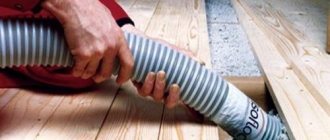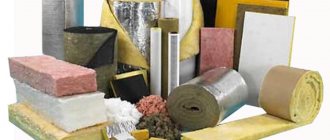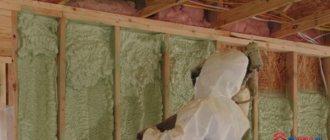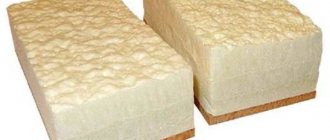Good health directly depends on the quality of your sleep. To get a good night's sleep, you need to choose a mattress that will meet the requirements for a good sleeping place. Recently, products filled with polyurethane foam (PPU) have become popular among buyers. They are distinguished by a high degree of comfort and a budget price. It remains to be seen whether they are as safe for health as the manufacturers say.
What is polyurethane foam?
Polyurethane foam is a synthetic material with a cellular structure that belongs to the group of gas-filled plastics. In everyday life it is often called “foam rubber”, but this is not true. Polyurethane foam is of high quality, it is more elastic and durable.
Thanks to a unique production technology (plastics, being in a liquid state, foam and harden), the material acquires a porous structure that contains a large amount of air (up to 98%). Polyurethane foam layers are lightweight, which greatly simplifies their operation.
What's better? Struttofiber, polyurethane foam (PPU), Ormafoam in mattresses?
In the modern world, chemical production produces and develops the latest materials that are used to stuff mattresses.
With the advent of artificial fillers, it has become possible to produce high-quality mattresses at budget prices for every buyer. Common fillings in mattresses
Currently represented by polyurethane foam, struttofiber and the new material ormafoam, let’s look at their properties and differences from each other in more detail.
Struttofiber is an artificial raw material made from polyesters. Sometimes cotton, silk, and coconut coir are added to it to impart certain properties. Its main feature is that the fibers of this material are located strictly vertically and work on the principle of a spring. Therefore, it is a durable and reliable material with high anatomical properties.
Ormafoam is a modified polyurethane foam made by cold foaming from polyesters and polyesters. In appearance it is similar to a honeycomb. Elastic and wear-resistant, this material is also popular for filling mattresses.
Areas of application of polyurethane foam
PPU or polyurethane foam, due to the presence of numerous pores, has high thermal insulation properties and a high degree of elasticity, which determined the scope of its application. The material is widely used in:
- construction as insulation;
- in the production of upholstered furniture and mattresses;
- as a filler for soft toys;
- for the production of sponges for cleaning needs;
- filters;
- rollers for painting work.
For upholstered furniture, mattresses, higher quality polyurethane foam is used. In other areas, lower grade material can be used.
Component composition of polyurethane foam
To make polyurethane foam, a mixture of two polymers is used:
- polyisocyanate;
- polyol.
The substances are mixed in a liquid state and undergo a foaming process. They are the main components of the solid part of the material, which accounts for a smaller part of the total composition. Additional elements are
- flame retardant additives;
- phenol;
- tertiary amine;
- toluene;
- phosphorus.
Most of the foam is made up of gaseous substances. This can be ordinary air or carbon dioxide, depending on the scope of application of polyurethane foam.
Types of mattresses and their features
Springless ones have been around for a long time, but they are inferior in popularity to spring ones. The point, rather, is a certain conservatism of buyers, since both of these types have their advantages and disadvantages.
On springs
Springs are a classic means of shock absorption. The rigidity of cold-rolled steel and its resistance to wear make them durable and reliable. It is customary to distinguish between two types of structures:
- classical, also known as Bonnell;
- independent.
A distinctive feature of the bonnell type design is that the springs are connected into a certain system; they are a single whole. The connection is made by simply twisting the springs with wire or ropes. Springs usually have a cylindrical shape, less often - cone-shaped.
An independent spring unit consists of elements practically isolated from each other. Each spring is placed in a case and takes the load independently. The consumer properties of a mattress are influenced by the number of springs per unit area. A square meter can accommodate from several tens to several thousand (!) elastic elements. Latex, coconut coir and other materials are used as support for such a spring. Along the perimeter, the spring block can be framed with polyurethane foam or the same latex.
It should be noted that prefabricated springs are also used for mattresses. For example, inside a larger spring there is a smaller one, both in diameter and in height. If the user's weight exceeds a certain limit, smaller springs come into action, thereby increasing the shock-absorbing properties.
Without springs
Springless mattresses, which contain foam rubber as a filler, have been popular for a long time, especially for equipping children's beds with them. But the use of new fillers makes it possible to produce products with fundamentally different custom properties.
A mattress with foam rubber is inexpensive, but has one significant drawback - the fragility of its springing properties. Quite quickly, foamed polyurethane, as a soft material, wrinkles, loses its shape, and therefore its value as a filler. But this drawback is more than compensated for by modern fillers. This:
- natural or artificial latex;
- coconut coir;
- latex polyurethane foam;
- other materials with good shock-absorbing properties.
The most successful solution is combined options, consisting, for example, of layers of coconut coir and latex. The manufacturer can finely adjust the rigidity without increasing the weight and height of the product.
Advantages and disadvantages of different types
A mattress with a dependent spring block tends to lose its shape quite quickly. In the lying area, which bears the greatest load, a depression is formed and rigidity is lost. But the main advantage is the relatively low price.
A product with independent springs is good because it allows you to evenly distribute the load, depending on the structure of the user’s torso, his weight and other features. In addition, such a product does not creak, since there is no friction between the springs. The obvious disadvantage of this solution is the cost.
Springless ones have a wide range of characteristics. By combining types of filler and their quantity, manufacturers achieve different levels of hardness, firmness and elasticity.
Among other things, natural fillers are environmentally friendly and do not pose a threat to the user’s health. Naturally, products with natural fillers are more expensive than those with artificial ones.
Which mattress is suitable for whom?
A foam or other soft mattress is suitable for children or users weighing up to fifty kilograms. With a dependent spring block they are a thing of the past. But their use for, for example, a bed on which you sleep infrequently is quite appropriate.
Products with combined filling, as well as with independent spring blocks, should be selected individually, depending on personal preferences, anatomical features and health status.
Properties of polyurethane foam
Polyurethane foam has both positive and negative properties. The latter are not critical when using the material in construction or in the production of cleaning, cleaning, and washing products. But we should not forget that they can be dangerous.
For upholstered furniture and mattresses, high-quality polyurethane foam is used, which has practically no negative properties.
Positive properties
- Low thermal conductivity.
- Waterproof.
- Vapor tightness.
- Thermal insulation characteristics.
- Waterproofing properties.
- Noise insulation.
- High adhesion.
Negative properties
- Does not tolerate direct sunlight.
- It's getting dark.
- It dries out and crumbles.
Is polyurethane foam in a mattress harmful?
Recently, a large number of rumors have appeared about the dangers of mattresses with polyurethane foam filling. They are explained by the composition. Anyone would be frightened by chemical dyes, phosphorus, formaldehyde and even arsenic.
But it must be taken into account that all these substances reacted during the foaming process and after the foam hardened they became completely harmless. They can only become active when the material is heated to 200 °C or during combustion. In an apartment it is impossible to obtain such a temperature, which means that substances hazardous to health will not be released.
It is better to pay attention to the positive characteristics of polyurethane foam mattresses:
- elasticity;
- anatomical;
- hypoallergenic;
- affordable price.
The last argument turns out to be the most effective. It is this that makes mattresses with polyurethane foam in demand among consumers.
Modern mattresses main types
Spring mattresses are a popular type
. Mattresses with “continuous” weaving of springs are being replaced by the products mentioned above - with an independent spring block. The design of a mattress with a dependent block often turns into a “hammock” under the weight of the person’s body, while mattresses with independent “barrel” blocks are elastic, better “adapt” to the curves of the body, and do not allow the spine to bend during sleep. Fillers for them: coconut coir, latex, linen and “Memory Foam” - a special polyurethane foam modified for use in space; it is used in the manufacture of orthopedic mattresses and pillows.
Springless mattresses
They are considered the best for people with musculoskeletal system disorders and joint diseases, and doctors recommend that teenagers sleep on them at least until they are 16 years old so that their posture is formed correctly. These mattresses are light, last longer and do not creak (there is nothing to creak or break), you can sleep peacefully, without rocking or swaying. Disadvantages include the high price and the inability to know about the quality of the filling if the mattress is not made to order. Springless mattresses usually consist of monolithic slabs made of latex, coir, polyurethane foam, etc.
Some types of mattresses, which are discussed below, are specifically springless - for example, the well-known cotton mattresses. It seems that this is the “Stone Age”, but the demand for them does not fall: they have their adherents, advantages and disadvantages. They are filled with cotton wool fibers of different lengths: “long-fiber” products are lighter and flatter, and those filled with short cotton fibers are heavier and thicker. Mattresses of optimal thickness and weight are obtained when the manufacturer combines fibers, using both short and long ones: they can last a long time, up to 10 years. Cotton mattresses are popular because of their low price and naturalness, but cotton wool is an excellent breeding ground for fungus and dust mites; it often clumps into clumps, and mattresses turn out “lumpy.”
Mattresses based on horse hair, sheep and camel wool
are considered a better option compared to cotton wool; they are natural, environmentally friendly and comfortable when new; they are easier to dry. But the wool falls into clumps, like cotton wool; harmful “inhabitants” multiply in it even faster; These mattresses cause allergies in some people. As for the orthopedic effect, it is absent in both cotton and woolen products, although the latter are still preferable in this sense.
Photo: what types of mattresses are there?
Latex mattresses
, according to the name, are made of natural or artificial latex, or a mixture of both. They have many advantages: elasticity - comfortable to sleep; durability - lasts about 15 years; practically do not smell of anything, especially natural ones, or the smell is weak; silent, “isolate” movements; safe and environmentally friendly. Natural latex is made from the sap of rubber trees.
In the 80s of the 20th century, vacuum mattresses appeared
. Using special installations, air is removed from finished mattresses, rolled up and packaged. Having bought such a mattress, you can safely put it on the car seat. At home, they place it on the bed, carefully remove the packaging, unroll it, and after a few hours it takes the shape of a regular mattress. Recommended for arthrosis, radiculitis, after injuries, and simply for those who want to maintain posture and good health. They are made from polyurethane foam or artificial latex.
Pros and cons of a polyurethane foam mattress
Like all mattresses, models with polyurethane foam filling have their advantages and disadvantages. All that remains is to analyze and decide whether their advantages are important for the consumer and whether the disadvantages are so critical. To reduce the number of shortcomings, it is recommended to study information about the types of polyurethane foam and their properties.
Advantages
The main advantage of polyurethane foam mattresses is their price. With other positive characteristics, they turned out to be worthy competitors to expensive models with natural fillers or materials created using innovative technologies.
Polyurethane foam mattresses
- elastic;
- breathable;
- have excellent orthopedic characteristics;
- light weight, which simplifies operation.
By choosing a model with PU foam filling, you get a budget mattress that will delight its owners.
Flaws
There is only one drawback - the risk of exposure to direct sunlight. This is especially important to consider in mattresses with removable covers.
The opinion about the harmful vapors emitted by the material is controversial today. If the mattress is not a fake, then we can safely say that it is safe for the human body.
Advantages and disadvantages
Nowadays, buying a mattress made of polyurethane foam is not difficult. Yes, it is a man-made material, but there is still some debate as to which is better when comparing PU foam or latex. The latter is natural, but extremely expensive. Polyurethane foam can provide virtually the same properties for less money.
Having visited more than one thematic forum and read reviews, which you also be sure to leave in the comments, certain conclusions were made regarding the pros and cons of the material.
Let's start with the advantages. They are:
[adv2]
- optimal balance between price and quality;
- presence of orthopedic properties;
- hygiene;
- lack of tendency to rot;
- pests do not grow inside;
- does not provoke allergic reactions;
- safe for health (with high quality);
- sufficiently long service life;
- ability to restore shape;
- the material breathes.
When choosing an orthopedic, spring or springless mattress, each of them can use polyurethane foam filler.
The main property of any high-quality mattress is its orthopedic properties. In this component, polyurethane foam performs excellently.
The PU foam mattress can be used as an anti-decubitus mattress. Recommended for overweight people and those who are forced to constantly lie down, undergo postoperative rehabilitation, are sick, etc.
But the material also has some disadvantages. Namely:
See also:
- Moisture is absorbed quickly and easily, as if into a sponge. Moreover, even simple evaporation can be absorbed;
- If the product is cheap, it will quickly wear out and become deformed;
- Careful care is required in the form of ventilation, periodic turning and cleaning;
- A service life of 10 years may seem short to some;
- It is difficult to clean on your own; you have to contact special organizations. Read about the nuances of cleaning a mattress from stains in our material;
- After 10 years, orthopedic and other properties begin to disappear, the material becomes harmful to health.
Relatively inexpensively you can get a fairly hard mattress that has optimal density, good orthopedic properties and a number of other advantages. At the same time, the disadvantages are fully compensated by the advantages.




